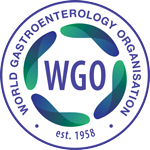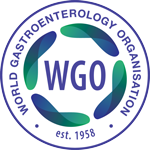Green Endoscopy: Championing Sustainability in the Endoscopy Suite
Vol. 28, Issue 2 (June 2023)
 |
Sridhar Sundaram, MD, DM, FISG
Tata Memorial Hospital, Homi Bhabha National Institute
Mumbai, India
|
| |
|
Climate change is a crisis that all of humanity is facing with its impact in various spheres including trade, economy, healthcare and geopolitics. Considering its global impact, the Paris Climate Accords were signed on Earth Day, i.e., 22 April 2016 by 195 countries, in an attempt to keep the global temperatures from rising two degrees Celsius from preindustrial levels, and to preferably keep it below one and a half degree Celsius.1 The aim was mitigating the rise in temperature by reducing the carbon footprint, which was the total set of greenhouse gas emissions caused directly and indirectly by an individual, event, organization or product.2 To achieve the targets set by the Paris Climate Accords, a year-on-year reduction in emission by at least 7.6% in emissions is needed.3 Healthcare industry is a major contributor to the carbon footprint, accounting for about 4.4% of all greenhouse emissions, ranking fifth amongst all industries.4 A major part (~71%) of these emissions are generated not in processes within the hospital, but in an attempt to provide ancillary services associated with healthcare like production of medicines and equipment, transport and other logistics. Endoscopy ranks third amongst different specialities with respect to carbon footprint.5 Endoscopy is also a growing industry with market size estimated at $10.8 billion USD in 2020 with an anticipated 8% increase every year.2 With increasing indications for minimally invasive procedures and use of endoscopy in different situations, emissions are expected to increase.
Sustainability and Green Endoscopy
Decreasing emissions directly correlates with sustainability, which is one of the Royal College of Physicians domains of quality.6 While the practical aspect of sustainability is about ensuring healthcare continues, the ethical aspect is to minimize impact on climate change. Traditionally, the value of any intervention is weighed by the outcome relative to cost. With respect to sustainability, value of any intervention is now redefined by the “triple bottom-line” with outcome relative to the environmental, social and financial impact of the intervention.7 The concept of green endoscopy emanates from this new concept of value of any intervention.
Green endoscopy refers to the coordinated effort by various stakeholders to reduce the carbon footprint generated by endoscopic intervention by actions in the pre-procedure, procedural and post-procedural period.8 Barriers exist to green endoscopy at various levels (Figure 1).9 Financial pressures drive the healthcare industry as well, with profits being driven by increased numbers. There is worry with respect to regulatory requirements and quality assurance, especially with respect to reusable devices in endoscopy. There is a significant knowledge gap with respect to sustainable practices in endoscopy with little or no incentives for taking up these practices at an individual unit level. Hence, there are concerted efforts at various levels from an international, national, unit and individual levels for adoption of green endoscopy practices.
Figure 1: Barriers to “Green Endoscopy”

Change is the Only Constant - Reduce, Reuse, Recycle
Changes at policy level remain critical in guiding units and individuals towards the adoption of best practices. International endoscopy societies can take the initial step towards improving adoption of sustainable endoscopic practices with multiple societies coming up with guidelines discussing green endoscopy.8, 10 Key issues remain establishing aims at large. For example, the World Gastroenterology Organisation has created a Climate Change Working Group in a bid to assess impact of our endoscopic practices on the environment and to promote sustainable practices.11 The National Health Service (NHS) also aims to reduce carbon footprint by 80% between 2028-2032 and achieving net zero by 2040.12 Disease prevention and health promotion, patient empowerment, choosing lean systems and pathways and preferential use of technology with lower environmental impact are the tenets of the campaign for greener healthcare. Designing quality improvement plans for green endoscopy adopting these tenets may improve adoption.13 Unit accreditation for green initiatives and fostering research in sustainable practices through grants are likely to have benefit in the long-term.
At an individual and endoscopy unit level, changes can be made on multiple grounds (Figure 2). The first step towards ensuring sustainability is to reduce wasteful procedures.14 Identification of drivers for wasteful procedures like economic (free market healthcare), administrative (old records not available needing repetition), behavioral (defensive medicine) or technical (no low-cost green alternatives available) factors and attempting to address these individually is vital. Appointing a green endoscopy lead from the unit to take responsibility and act as a facilitator for knowledge and good practice will be a welcome step in most units.15 Auditing waste disposal and taking corrective measures is another step in the right direction. A recent study from Portugal looked at targeted intervention to reduce regulated medical waste in a four-stage prospective audit. They showed a 12.9% and 41.9% reduction respectively in total waste and regulated medical waste from start of study to one-month after intervention with increase in landfill and recyclable waste, with sustained benefits at 4-months after initial intervention. 16 Units can attempt a paperless modus operandi with digital information, especially considering most patients now have access to mobile phones and internet.17 Teleconsultation can reduce hospital visits and help further reduce carbon footprint.

Figure 2: Green Endoscopy Initiatives
Other steps necessary in the endoscopy unit include the need to reduce histology samples, reduction in use of sterile water and responsible purchasing with survey of industrial supply chains with environmental changes. In a previous study, Gordon et al. demonstrated that the carbon footprint for every bottle of pathology was similar to driving 0.7 miles.18 Hence, reduction in unnecessary biopsies will significantly reduce carbon footprint. A clear definition for biopsy protocols and indications are necessary. Despite internal processing plants, sterile water may be a major source for CO2 generation in the endoscopy suite. Alternatively, drinking water may be used for flushing ports, thereby reducing both CO2 generation for water processing and reduce plastic utilization for transport of water. Packaging is a potential source of CO2 generation and hence streamlining supply chains is critical. In a previous study, Rizan et al. showed that hospitals in the United Kingdom generate up to one million metric tons of clean non-infectious plastic waste every year.19 Understanding waste streams which generate maximum CO2 and optimizing waste disposal methods like recycling and incineration accordingly is imperative. Also, responsible purchasing with appropriate maintenance of stock may help reduce wastage and unnecessary reprocessing of equipment. Lastly, environmental changes implemented to reduce energy wastage like lighting motion sensors and also self-switch-off of non-functional computers may be useful in optimizing the energy utilization in the endoscopy suite.
Disposal vs. Reuse Conundrum
With industry actively pushing towards single use of all accessories as well as endoscopes, there is need to rationalize use of both single use endoscopes and accessories. While disposable duodenoscopes have been found to be technically as good as reusable duodenoscopes in various studies, their environmental impact remains a matter of debate (Figure 3).20, 21 In a previous study by Nguyen et al. assessing life cycle (“cradle to grave”) of single use duodenoscopes, reusable duodenoscopes with and without disposable caps, greenhouse emissions were 24 to 47 times higher with single use duodenoscopes.22 With respect to cost effectiveness, reusable duodenoscopes with disposable caps are the most cost-effective alternative for ERCPs in practice after considering the risk of duodenoscope related infections.23 As with every new technology, we have reached the peak of inflated expectations with the single-use duodenoscope. However, rational use and appropriate indications are yet to be established. With respect to accessories, policies on reuse of accessories need to be established by various organizations in consultation with industry to optimize patients’ outcomes, without any adverse impact on the environment. Channels for recycling of accessories need to be established.

Figure 3: Environmental impact of disposable duodenoscopes
Conclusions
With ever increasing indications for endoscopic interventions, the environmental cost relative to outcome needs weightage. Radiation units follow the ALARA principle, i.e. as low as reasonably achievable dose of radiation to minimize exposure.24 The next challenge remains finding a balance and following the ALARA principle in our endoscopy units as a means of reducing our carbon footprint. Systematic concerted efforts by the entire gastroenterology fraternity from the individual and unit level till the national and international society level are the need of the hour to streamline green endoscopy initiatives and to follow the tenets of reduce, reuse and recycle.
References:
- "Paris Agreement". United Nations Treaty Collection. Archived from the original on 5 July 2021. Retrieved 15 July 2021.
- Siau K, Hayee Bu'Hussain, Gayam S. Endoscopy’s current carbon footprint. Tech Innov Gastrointest Endosc2021;23:344–52. 10.1016/j.tige.2021.06.005
- UN Environment Programme. Cut global emissions by 7.6 percent every year for next decade to meet 1.5°C Paris target—UN report. Nov 26, 2019. https://www.unenvironment.org/news-and-stories/press-release/cut- global-emissions-76-percent-every-year-next-decade-meet-15degc (accessed May 4, 2020).
- Healthcare’s climate footprint. https://www.arup.com/perspectives/publications/research/section/healthcares-climate-footprint (accessed 1 Mar 2021).
- Vaccari M, Tudor T, Perteghella A. Costs associated with the management of waste from healthcare facilities: An analysis at national and site level. Waste Manag Res 2018;36:39–47.
- Atkinson S, Ingham J, Cheshire M, Went S. Defining quality and quality improvement. Clin Med (Lond). 2010;10(6):537-539. doi:10.7861/clinmedicine.10-6-537
- Mortimer F, Isherwood J, Wilkinson A, et al. Sustainability in quality improvement: redefining value. Future Healthc J 2018;5:88–93.
- Sebastian S, Dhar A, Baddeley R, et al. Green endoscopy: British Society of Gastroenterology (BSG), Joint Accreditation Group (JAG) and Centre for Sustainable Health (CSH) joint consensus on practical measures for environmental sustainability in endoscopy. Gut. 2023;72(1):12-26. doi:10.1136/gutjnl-2022-328460
- Perisetti A, Desai M, Bourke MJ, et al. Production and possible reduction of greenhouse gases produced during GI endoscopy activity: a systematic review of available literature. Gut. 2023;72(3):493-500.
- Bortoluzzi F, Sorge A, Vassallo R, et al. Sustainability in gastroenterology and digestive endoscopy: Position Paper from the Italian Association of Hospital Gastroenterologists and Digestive Endoscopists (AIGO). Dig Liver Dis. 2022;54(12):1623-1629.
- Leddin D, Omary MB, Veitch A, et al. Uniting the Global Gastroenterology Com- munity to Meet the Challenge of Climate Change and Nonrecyclable Waste. J Clin Gastroenterol 2021;55:823–9.
- National Health Service. Delivering a ’net zero’ National Health Service. Available: https://www.england.nhs.uk/greenernhs/wp-content/uploads/sites/51/2020/10/ delivering-a-net-zero-national-health-service.pdf [Accessed 21 Jan 2022].
- Mortimer F, Isherwood J, Pearce M, et al. Sustainability in quality improvement: measuring impact. Future Healthc J 2018;5:94–7.
- Maurice JB, Siau K, Sebastian S, et al. Green endoscopy: a call for sustainability in the midst of COVID-19. Lancet Gastroenterol Hepatol. 2020;5(7):636-638. doi:10.1016/S2468-1253(20)30157-6
- Donnelly L. Green endoscopy: practical implementation. Frontline Gastroenterol. 2022;13(e1):e7-e12. Published 2022 Jun 10. doi:10.1136/flgastro-2022-102116
- Cunha Neves JA, Roseira J, Queirós P, Sousa HT, Pellino G, Cunha MF. Targeted intervention to achieve waste reduction in gastrointestinal endoscopy. Gut. 2023;72(2):306-313.
- Colledge A, Car J, Donnelly A, et al. Health information for patients: time to look beyond patient information leaflets. J R Soc Med 2008;101:pp.:447–53.
- Gordon IO, Sherman JD, Leapman M, et al. Life cycle greenhouse gas emissions of gastrointestinal biopsies in a surgical pathology laboratory. Am J Clin Pathol 2021;156:540– 9.
- Rizan C, Bhutta MF, Reed M, et al. The carbon footprint of waste streams in a UK Hospital. J Clean Prod 2021;286:125446.
- Bang JY, Hawes R, Varadarajulu S. Equivalent performance of singleuse and reusable duodenoscopes in a randomised trial. Gut 2021;70: 838-44.
- Ross AS, Bruno MJ, Kozarek RA, et al. Novel single-use duodenoscope compared with 3 models of reusable duodenoscopes for ERCP: a randomized bench-model comparison. Gastrointest Endosc. 2020;91(2):396-403.
- Le NNT, Hernandez LV, Vakil N, Guda N, Patnode C, Jolliet O. Environmental and health outcomes of single-use versus reusable duodenoscopes. Gastrointest Endosc. 2022;96(6):1002-1008.
- Barakat MT, Ghosh S, Banerjee S. Cost utility analysis of strategies for minimizing risk of duodenoscope-related infections. Gastro- intest Endosc 2022;95(05):929–938.e2
- Musolino SV, DeFranco J, Schlueck R. The ALARA principle in the context of a radiological or nuclear emergency. Health Phys. 2008;94(2):109-111.





